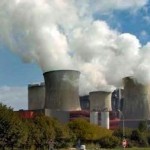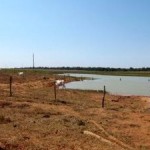Humans are overloading ecosystems with nitrogen through the burning of fossil fuels and an increase in nitrogen-producing industrial and agricultural activities, according to a new study. While nitrogen is an element that is essential to life, it is an environmental scourge at high levels.
According to the study, excess nitrogen that is contributed by human activities pollutes fresh waters and coastal zones, and may contribute to climate change. Nevertheless, such ecological damage could be reduced by the adoption of time-honored sustainable practices.
Appearing in the October 8, 2010 edition of ‘Science’ and conducted by an international team of researchers, the study was partially funded by the National Science Foundation.
The Nitrogen Cycle
The nitrogen cycle – which has existed for billions of years – transforms non-biologically useful forms of nitrogen found in the atmosphere into various biologically useful forms of nitrogen that are needed by living things to create proteins, DNA and RNA, and by plants to grow and photosynthesize. The transformation of non-biologically useful forms of nitrogen to useful forms of nitrogen is known as ‘nitrogen fixation’.
Mostly mediated by bacteria that live in legume plant roots and soils, nitrogen fixation and other components of the nitrogen cycle weave and wind through the atmosphere, plants, sub-surface plant roots, and soils; the nitrogen cycle involves many natural feedback relationships between plants and microorganisms.
According to the ‘Science’ paper, since pre-biotic times, the nitrogen cycle has gone through several major phases. The cycle was initially controlled by slow volcanic processes and lightning and then by anaerobic organisms as biological activity started. By about 2.5 billion years ago, as molecular oxygen appeared on Earth, a linked suite of microbial processes evolved to form the modern nitrogen cycle.
Human Impacts on Nitrogen Cycle
But the start of the 20th century, human contributions to the nitrogen cycle began sky-rocketing. “In fact, no phenomenon has probably impacted the nitrogen cycle more than human inputs of nitrogen into the cycle in the last 2.5 billion years,” says Paul Falkowski of Rutgers University, a member of the research team.
“Altogether, human activities currently contribute twice as much terrestrial nitrogen fixation as natural sources, and provide around 45 percent of the total biological useful nitrogen produced annually on Earth,” says Falkowski. Much of the human contributions of nitrogen into ecosystems come from an 800 percent increase in the use of nitrogen fertilizers from 1960 to 2000.
Another problem: Much of nitrogen fertilizer that is used worldwide is applied inefficiently. As a result, about 60 percent of the nitrogen contained in applied fertilizer is never incorporated into plants and so is free to wash out of root zones, and then pollute rivers, lakes, aquifers and coastal areas through ‘eutrophication’. (Eutrophication is a process caused by excess nutrients that depletes oxygen in water bodies and ultimately leads to the death of animal life.)
In addition, some reactions involving nitrogen release nitrogen oxide into the atmosphere. Nitrogen oxide is a greenhouse gas that has 300 times (per molecule) the warming potential of carbon dioxide. In addition, nitrogen oxide destroys stratospheric ozone, which protects the earth from harmful ultraviolet (UV-B) radiation.

Methods to Reduce Nitrogen Overloading
“Natural feedbacks driven by microorganisms will likely produce a new steady-state over time scales of many decades,” says Falkowski. “Through this steady state, excess nitrogen added from human sources will be removed at rates equivalent to rates of addition, without accumulating.”











